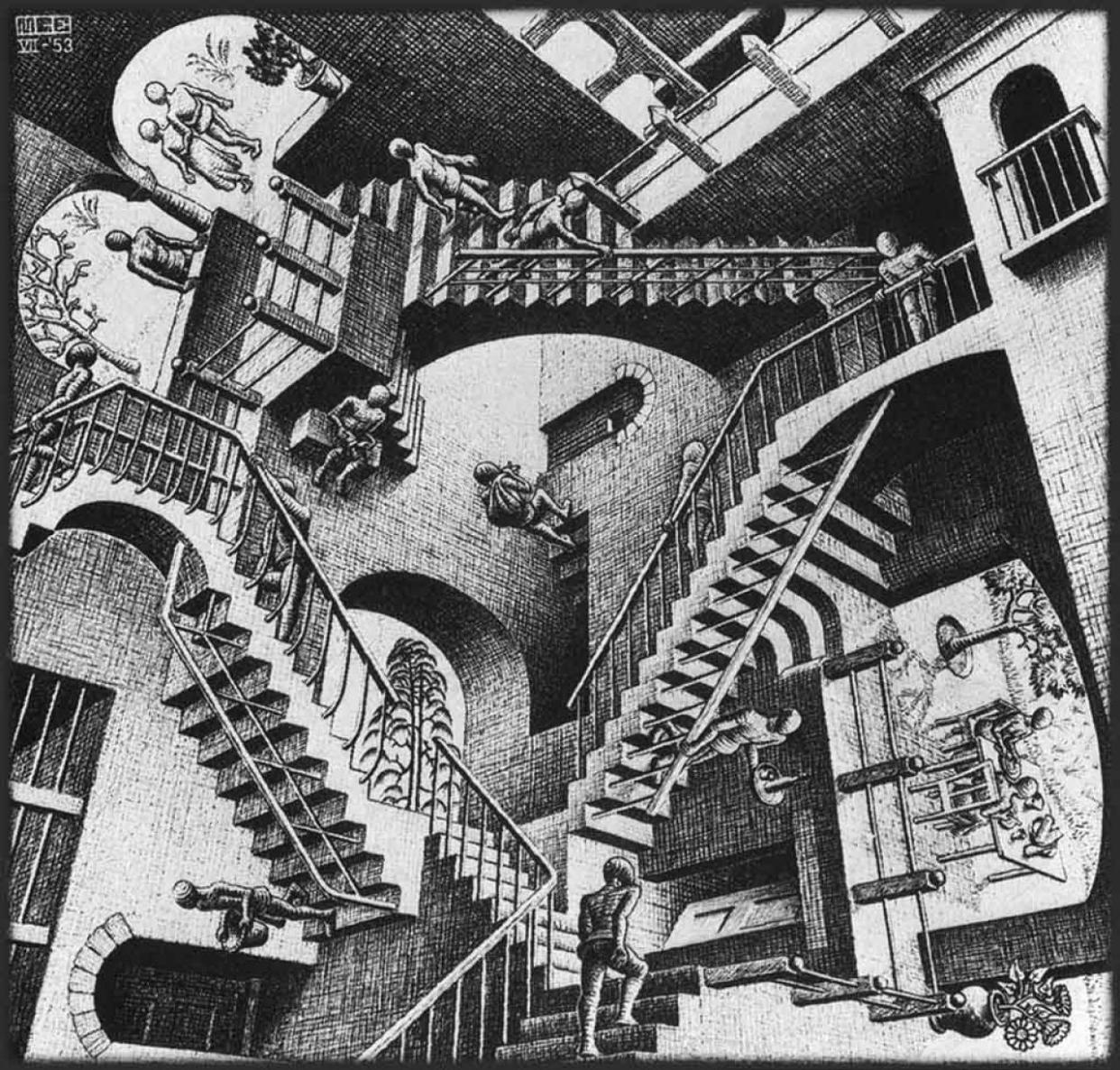'Interstellar,' 'Labyrinth' and Other Films Inspired by the Mind-Bending Art of M.C. Escher

“I’m very inspired by the prints of M.C. Escher,” director Christopher Nolan told The Daily Beast in an interview published yesterday. The Dutch graphic artist’s inspiration can be seen throughout his new film Interstellar, which envisions the multiple dimensions of space like an interactive version of Escher’s most famous lithograph, “Relativity”(above). Over the past 30 years, Escher, whose artistic career spanned from 1922 to 1969, has become a go-to visual reference for cinematic fantasy worlds that exist outside normal time and space. Here, six film scenes that evoke Escher’s mind-bending art.
Labyrinth (1986)
Production designer Elliot Scott created a three-dimensional staircase set based on Escher’s Relativity – then put David Bowie and a baby in it! – for Jim Henson’s musical adventure.
Lord of the Rings: The Fellowship of the Ring
Escher was a key influence for Lord of the Rings production designer Grant Major, particularly when designing the vast underground chambers of Moria. The shadowed columns and passages in this scene from Fellowship of the Ring echo Escher drawings like “Nocturnal Rome: Colonade of St. Peter’s” and "Procession in Crypt.” More examples of Escher-like images in Lord of the Rings can be found here.
A Nightmare on Elm Street 5: The Dream Child (1989)
Question: If Freddy Krueger is the scariest thing lurking in your subconscious, then what must Freddy’s subconscious look like? Answer: A lot like Escher’s “Relativity.” Freddy’s "dream core,” which appears in both the fifth and sixth movies, is an Escher-like labyrinth of stairs where the killer keeps painful memories and children’s souls. (It shows up in trailer at the :58 and 1:07 marks.)
Harry Potter and the Sorcerer’s Stone (2001)
Filmgoers of a certain generation look at “Relativity” and are immediately transported to Hogwarts School, where the Grand Staircase mimics Escher’s architecturally impossible angles.
Mirrormask (2005)
Artist Dave McKean, who directed this surreal fantasy film, has his own distinct visual style. Nevertheless, the set designs — particularly this one, with its repeating pattern of spiral staircases — are often reminiscent of Escher.
Inception (2010)
Before Interstellar, director Christopher Nolan embraced Escher-like imagery in his dream thriller Inception. The film’s most visually dazzling sequences, including the gravity-free hallway fight and this folding-city scene, evoke the optical illusions of later Escher works like “Ascending and Descending”, "House of Stairs,” and "Print Gallery.”
Image: ”Relativity” lithograph by M. C. Escher


